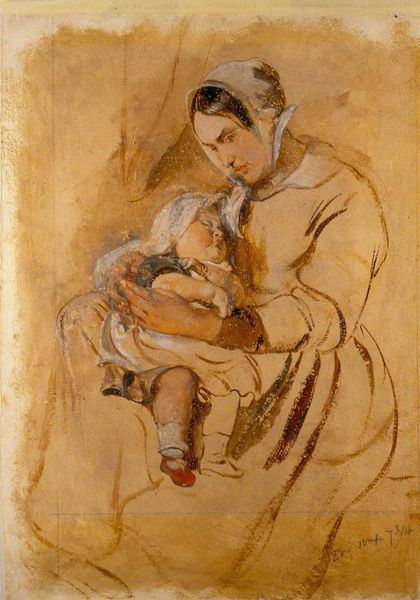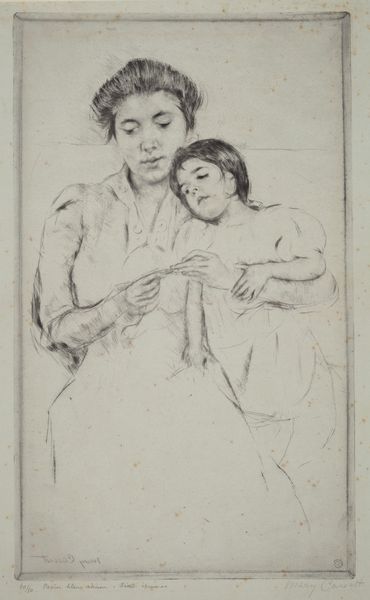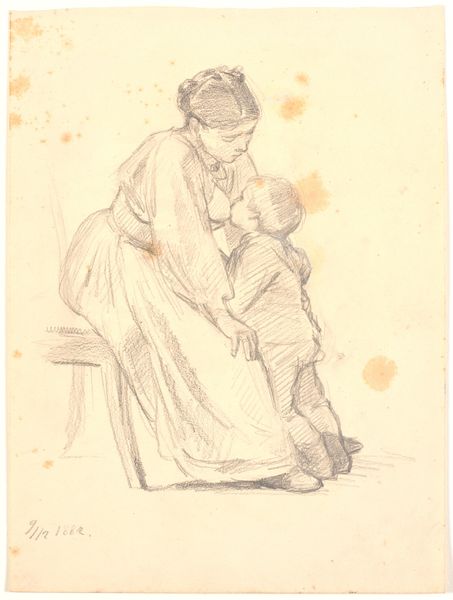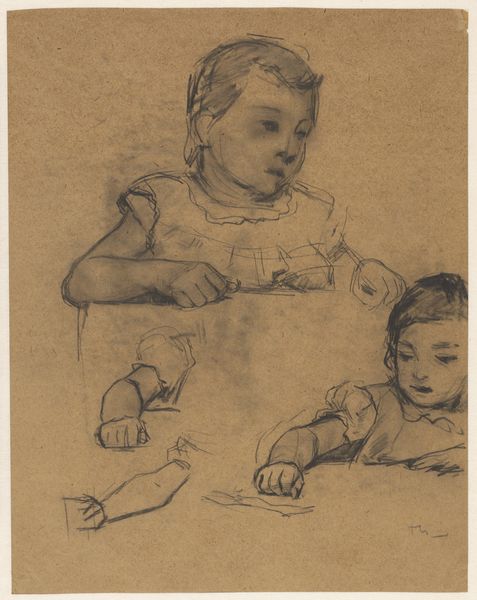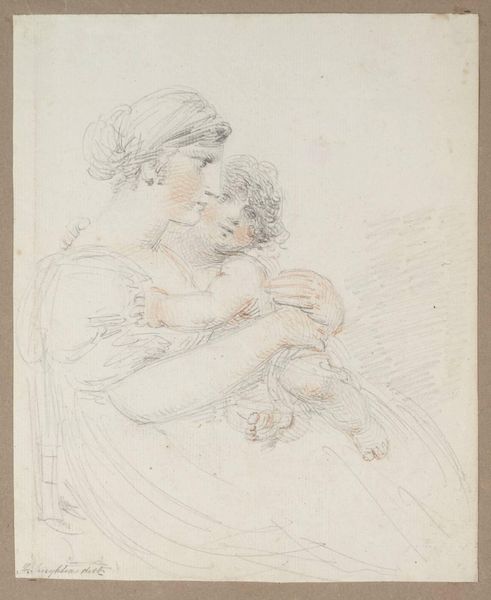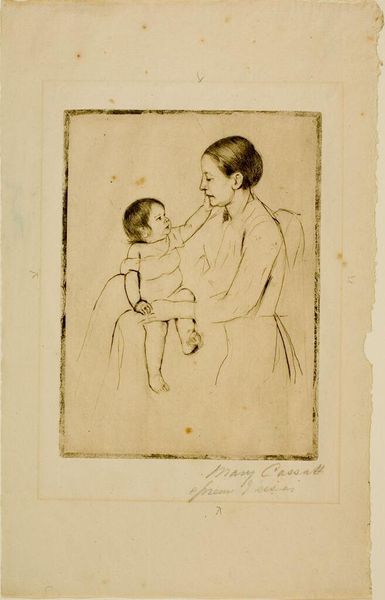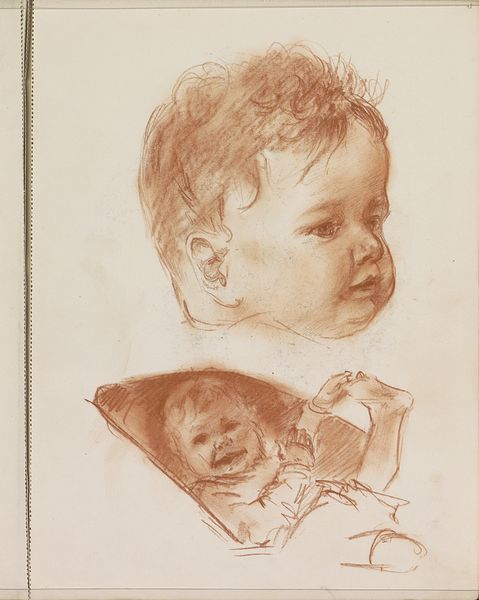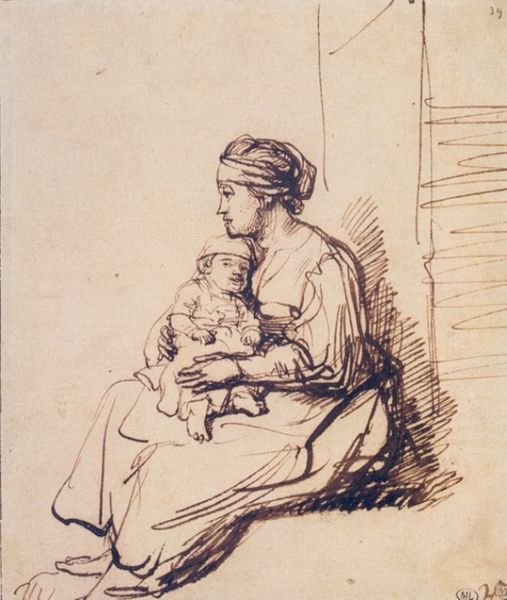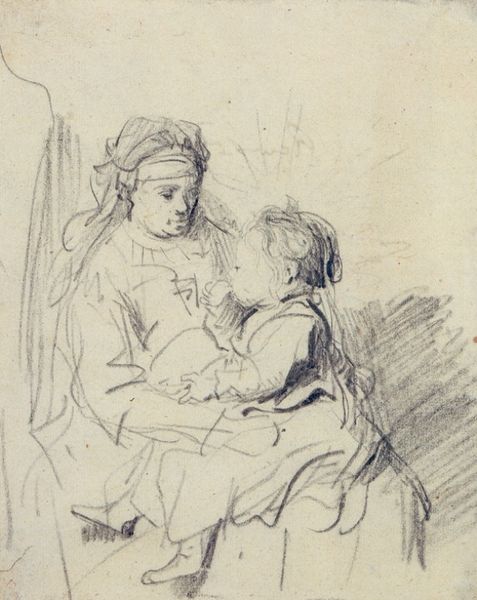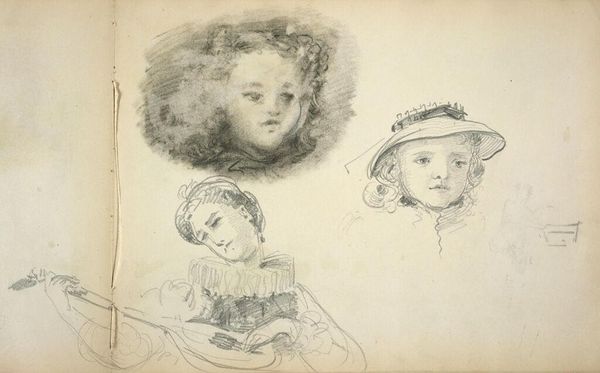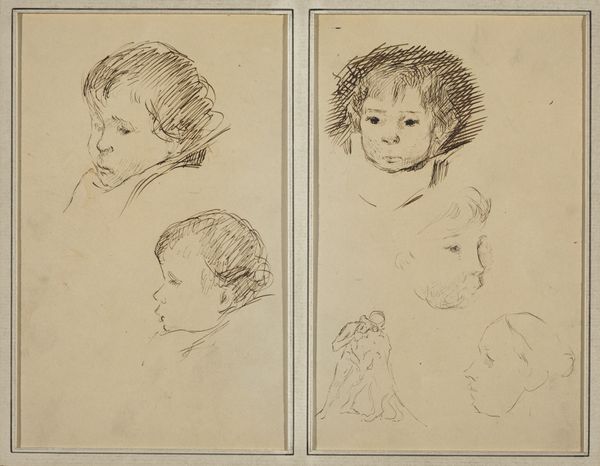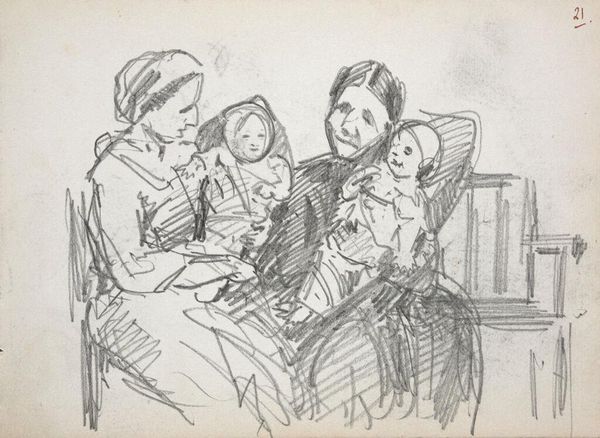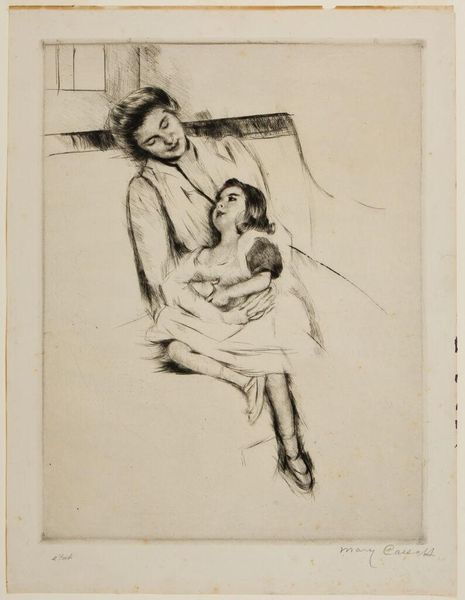
drawing, watercolor, ink
#
portrait
#
drawing
#
pencil sketch
#
figuration
#
watercolor
#
ink
#
underpainting
#
watercolour bleed
#
watercolour illustration
#
genre-painting
#
italian-renaissance
#
italy
#
watercolor
Dimensions: 31 x 15.5 cm
Copyright: Public domain
Editor: This is Gerolamo Induno's "Maternal Joys," created around 1876, using ink and watercolor. It’s a fairly quick sketch, seemingly capturing a private, domestic moment. The loose lines and the soft washes of color create an intimate, almost fleeting, impression. How do you interpret this work beyond its surface-level charm? Curator: That’s a perceptive observation. I’m interested in how "Maternal Joys," created within a specific historical context, invites us to question the representation of women. Induno, by portraying domesticity, seemingly reinforces traditional roles, but simultaneously, this glimpse into private life challenges the public sphere dominated by men. Editor: So, you're saying the painting might be more subversive than it appears? Curator: Precisely. Consider the emphasis on women's emotional labor. While seemingly celebrating "joys," it quietly acknowledges the demands and expectations placed on women. It's a glimpse into the domestic space that might be both comforting and confining. The inclusion of “Verdi” music on the piano – does that act as an indication of cultural belonging, maybe aspirations? What are your thoughts? Editor: That's a compelling question! I hadn’t considered that. The musical score speaks of her education, challenging the idea that a woman's only role is motherhood. It could indicate agency – that her identity exists outside motherhood. Curator: Exactly. By situating this work within broader discussions of gender, class, and cultural identity in 19th century Italy, we can glean rich insights that extend beyond the seemingly straightforward portrayal of maternal bliss. Editor: I never thought about it that way! I’ll certainly view art from this era with a more critical eye. Curator: And hopefully, that critical perspective will extend to your interpretation of contemporary art as well! Remember that artworks don't exist in a vacuum; they are always in conversation with the social and political forces that shape them.
Comments
No comments
Be the first to comment and join the conversation on the ultimate creative platform.
